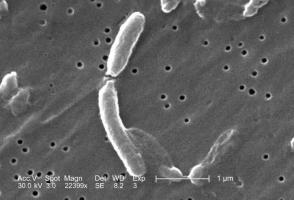Steinert's disease: causes, symptoms and treatment
Steinert's disease, the most common form of myotonic muscular dystrophy in adults, is a form of dystonia that affects both voluntary muscles and many other organs of the body.
Steinert's is one of the most variable and heterogeneous diseases that are known, since it presents in very different ways in its severity, age of onset and affected systems: from the brain, vision and the immune system to the skin and the reproductive system. Know what is the cause of this disease and how it manifests itself in those who suffer from it.
- You may be interested in: "The 15 most frequent neurological disorders"
What is Steinert's disease?
Steinert's disease, first described in 1909, is a type of genetically transmitted muscular dystrophy. A mutation in the gene that intervenes in the normal function of the muscles prevents them from carrying out their task properly. It is an autosomal dominant mutation, so if one of the two parents has the mutation, there is a 50% chance that the child will manifest said mutation.
Therefore, for the diagnosis it is necessary to carry out a complete family anamnesis, physical examination and laboratory tests. Final confirmation is obtained through a genetic test. The blood of the patient will be tested to see if it contains the gene mutation described as causing Steinert's disease. Today it is also possible do a prenatal test and find out if the fetus's DNA contains this mutation and if he will develop the disease.
Because there are many muscle disorders that can mimic Steinert's disease, it is diagnosis is often delayed, as the symptoms are confused and it is necessary to rule out the other diseases before. For this reason, physicians must be very aware of the wide range of variability with which the disease presents and arrive at a diagnosis as soon as possible.
Interestingly, in this disorder a phenomenon called “anticipation” occurs. The disease is diagnosed earlier and earlier in each generation., resulting in greater severity of symptoms.
- You may be interested in: "Duchenne muscular dystrophy: what it is, causes and symptoms"
Symptoms of Steinert's disease
It is characterized by the progressive deterioration of voluntary muscles, becoming weaker and harder to control. The deterioration translates into a myopathy, that is, a muscular weakness that makes contraction difficult and does not allow the same degree of tension to be obtained as a normal person. For example, due to the difficulty in moving the facial muscles, they will have difficulties in articulating sounds.
In addition, people with Steinert's disease lengthen muscle contractions and are unable to relax certain muscles after using them. This is called myotonia. For example, after shaking hands with someone or grasping a doorknob to open a door, they may find it very difficult to relax.
1. neurological manifestations
The intelligence of people with Steinert's disease is normal, but due to muscular difficulties they may have learning problems and a developmental delay. Damage to the nerves of the feet and hands and excessive daytime sleepiness, associated in part with the effort involved in having the volunteer's muscles tense for longer.
These people often feel exhausted, so they reduce their activity, affecting both their work and their daily life. As the disease progresses, they leave aside pleasant activities, affecting your mood.
It is not uncommon to find cataracts in the vision of Steinert patients, retinal damage, or drooping eyelids due to muscle weakness in the parts responsible for keeping them open.
2. cardiorespiratory problems
It is common to find that newborns have respiratory problems, as well as lung infections. Due to muscle weakness, people with Steinert's disease can aspirate, that is, to aspire liquids or solids through the respiratory tract, reaching the point of flooding the lungs. Many patients have difficulty breathing enough air and do not oxygenate fully. As muscle tone is lost, it happens that when sleeping the airways can become partially obstructed, causing sleep apnea.
Heart problems in the disease include rhythm disturbances, muscle hypertrophy, decreased blood pressure and, in some cases, sudden death. They may also present hormonal peculiarities such as insulin resistance, or premature frontal baldness in men. In addition, lower levels of antibodies are found in the blood.
3. Other affected systems
The gastrointestinal system is also affected. Patients have swallowing problems and pain and swelling after meals. The digestive tract is affected such as constipation, diarrhea, irritable bowel syndrome, and gastrointestinal reflux. Gallstones are very common, becoming the reason for intervention in up to a third of the patients.
The reproductive system suffers the consequences of the disorder: the testicles are smaller, a lower number of spermatozoa and less testosterone in men, hindering fertility. Women with Steinert's disease also are more likely to have a miscarriage and have more problems during childbirth.
Treatment
Although there is no cure for Steinert's disease, it is possible perform symptomatic management to improve the patient's quality of life. In addition to a medical intervention for each specific symptom, it will be necessary to carry out therapy rehabilitative physical therapy with a physical therapist to acquire or maintain muscle tone within possible.
Occupational therapy will be very helpful for keep the patient active and not fall into helplessness inactivity, thus preventing muscle atrophy and slowing down degeneration. A speech therapist can be very helpful for those patients who have difficulties with the articulation of sounds.
The figure of the psychologist can be a fundamental help to deal with the emotional problems that such a limiting disease entails and, above all, to revive motivation of the patient. It is vital that you take charge of your treatment and do not remain in a passive attitude regarding your illness, for which it is good that the treatment between the health team and the patient's relatives is fluid.

